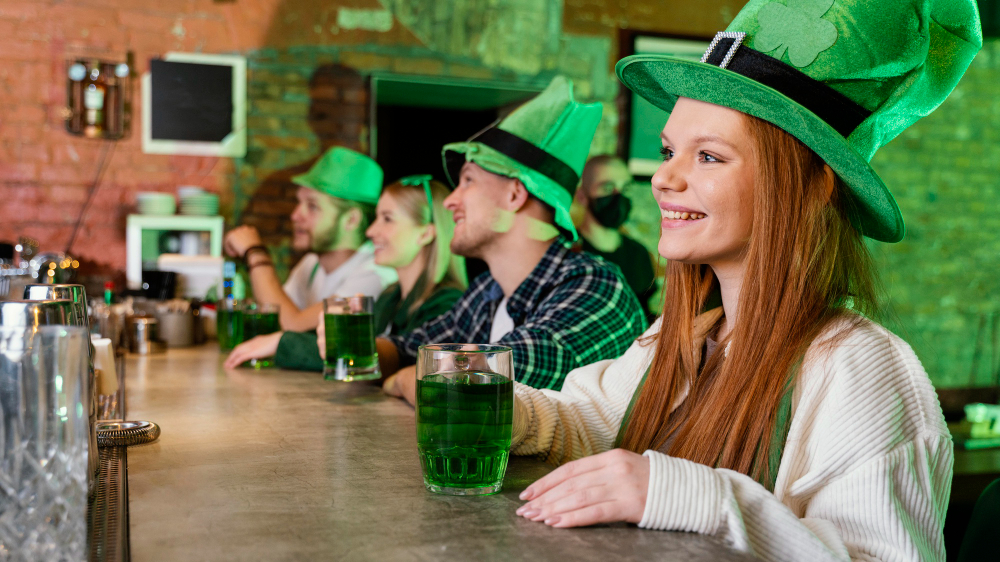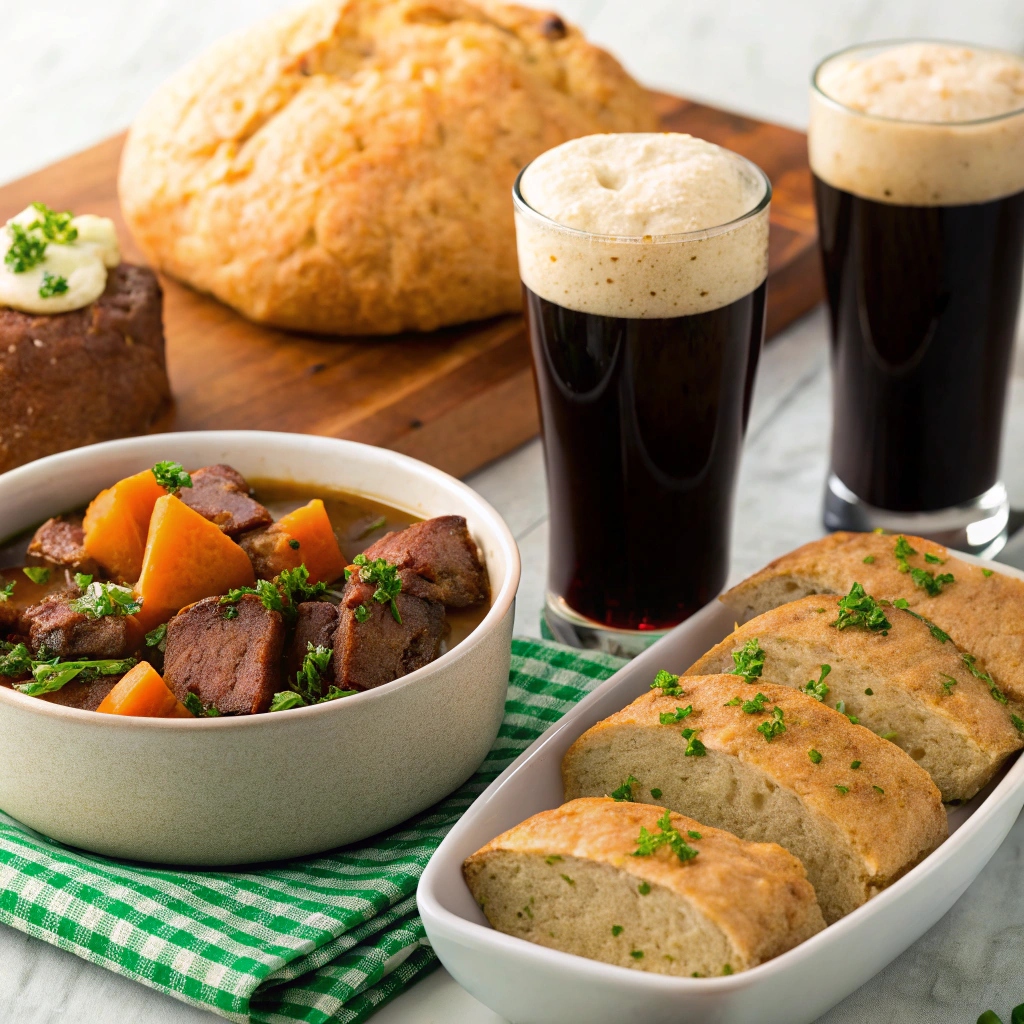Ireland’s culinary heritage is as rich and diverse as its history, offering a delightful mix of hearty traditional dishes and innovative modern fare. In this comprehensive guide, we invite you to embark on a culinary journey through Ireland—discovering must-try foods, regional specialties, and unique dining experiences that capture the authentic flavors of the Emerald Isle.
Introduction
Steeped in centuries of history, Irish cuisine is a delicious reflection of the island’s natural bounty, cultural heritage, and innovative spirit. From the humble farmhouse ingredients to gourmet creations in modern bistros, Irish food offers something for every palate. This guide will take you on a detailed tour of Ireland’s culinary landscape—introducing you to classic dishes, explaining the origins and evolution of traditional recipes, and offering practical tips for dining like a local.
The Roots of Irish Cuisine
A Tradition Steeped in History
Irish cuisine has evolved over millennia, influenced by the island’s geography, climate, and historical events. Key ingredients like potatoes, dairy, fresh seafood, and seasonal vegetables have been at the heart of Irish cooking for generations.
- Historical Influences:
- Early Celtic tribes relied on locally foraged ingredients and simple cooking methods.
- The introduction of the potato in the 16th century revolutionized Irish cooking, giving rise to iconic dishes such as colcannon and boxty.
- British and European influences over the centuries brought new flavors and culinary techniques while Irish cooks maintained their distinctive approach.
- Cultural Resilience:
- Despite periods of hardship and change, Irish food has remained a vital expression of community and tradition.
- Family recipes, passed down through generations, continue to shape the way modern Irish cuisine is prepared and enjoyed.
Traditional Irish Dishes You Must Try
Irish Stew
One of the most iconic dishes, Irish stew is a hearty and comforting meal traditionally made with lamb or mutton, potatoes, carrots, onions, and fresh herbs.
- Key Features:
- Slow-cooked to tender perfection, the flavors meld into a rich, savory broth.
- Often enjoyed with a slice of freshly baked soda bread to soak up every drop of the delicious sauce.
- Tip: Look for variations that incorporate seasonal vegetables or even a splash of Guinness for added depth.
Soda Bread
Irish soda bread is a staple that has been lovingly baked in homes across the country for generations.
- Ingredients:
- Made with simple ingredients like flour, baking soda, salt, and buttermilk, this bread is quick to prepare and deeply flavorful.
- Variations include additions such as raisins, caraway seeds, or even a touch of honey for sweetness.
- Serving Suggestion: Enjoy it warm with a pat of butter or alongside a bowl of hearty stew.
Boxty
Boxty is a traditional Irish potato pancake, showcasing the versatility of Ireland’s most famous ingredient.
- Preparation:
- Made by grating raw potatoes and combining them with mashed potatoes, flour, and buttermilk.
- Fried to a golden crisp, boxty can be served as a side dish or as a base for savory toppings.
- Culinary Note: The dish is celebrated for its comforting texture and ability to complement both sweet and savory accompaniments.
Colcannon and Champ
These two classic potato dishes are beloved in Irish households and highlight the importance of the humble potato.
- Colcannon:
- A rich mixture of mashed potatoes, kale (or cabbage), butter, and cream.
- Often served with a side of meat or as a filling for pies.
- Champ:
- Similar to colcannon but made with scallions (green onions), giving it a distinct, zesty flavor.
- Tip: Both dishes are best enjoyed when freshly prepared and paired with traditional Irish corned beef or lamb.
Seafood Delicacies
With its extensive coastline, Ireland offers a bounty of fresh seafood that plays a significant role in its culinary traditions.
- Key Specialties:
- Smoked Salmon: Often served with brown bread, cream cheese, and capers for a delicate, smoky flavor.
- Mussels and Oysters: Freshly harvested and steamed in white wine and garlic, these shellfish are a treat for any seafood lover.
Irish Breakfast: A Hearty Start to the Day
The traditional Irish breakfast is a robust meal designed to fuel a long day of work or exploration.
- Components:
- Typically includes bacon, sausages, black and white pudding, eggs, tomatoes, mushrooms, and baked beans.
- Served with a side of toast or Irish soda bread.
- Tip: Enjoy a traditional Irish breakfast at a local café to experience the authentic flavors and generous portions that set the tone for the day.
Modern Twists on Traditional Flavors
Fusion Cuisine in Contemporary Ireland
Modern Irish chefs have embraced traditional ingredients while experimenting with global flavors, leading to innovative dishes that respect heritage while pushing culinary boundaries.
- Examples:
- Gourmet Irish Stew: Reinvented with exotic spices, lean meats, and creative garnishes.
- Artisanal Soda Bread: Infused with ingredients like rosemary, olive oil, or sun-dried tomatoes to add a modern flair.
- Culinary Scene: Trendy restaurants in cities like Dublin, Cork, and Galway are at the forefront of this culinary revolution, blending tradition with innovation.
Farm-to-Table Experiences
Ireland’s commitment to locally sourced, sustainable ingredients has given rise to a vibrant farm-to-table movement.
- Highlights:
- Many restaurants emphasize direct partnerships with local farmers and producers, ensuring freshness and supporting the community.
- Seasonal menus reflect the best of what Irish agriculture has to offer, with dishes that change throughout the year.
Exploring Regional Variations
The West: Seafood and Coastal Flavors
Along Ireland’s rugged western coast, the seafood is as fresh as it gets.
- Specialties:
- Dungeness crab, sea bass, and scallops feature prominently in the local cuisine.
- Traditional recipes often incorporate local seaweed and herbs unique to the region.
- Dining Tip: Enjoy a seaside meal with panoramic ocean views for a truly immersive experience.
The South: Fusion of Tradition and Innovation
The south of Ireland, including counties like Cork and Kerry, offers a dynamic culinary scene that marries tradition with modern influences.
- Specialties:
- Rich, meaty stews, artisan cheeses, and robust red wines are hallmarks of the region.
- Innovative bistros in cities like Cork are redefining traditional Irish dishes with creative techniques.
- Recommendation: Explore local food markets and pop-up culinary events to taste the cutting-edge of Irish cuisine.
The Midlands: Hearty and Homestyle
The Irish Midlands are known for their agricultural heritage and hearty, home-style cooking.
- Dishes:
- Expect robust meat pies, creamy mashed potatoes, and freshly churned butter that speak to the region’s rural roots.
- Local Charm: Small-town cafés and family-run restaurants offer an authentic taste of traditional Irish hospitality.
Insider Tips for Culinary Explorers
How to Eat Like a Local
- Engage with the Community: Don’t be shy about asking locals for their favorite dishes and hidden gems—they often know the best spots off the beaten path.
- Join a Food Tour: Guided culinary tours offer insider insights into the history, culture, and flavors of Irish cuisine. (Insert partner link here for food tour packages)
- Attend Cooking Classes: Hands-on classes provide a deeper understanding of traditional recipes and techniques, letting you recreate a bit of Ireland in your own kitchen.
Must-Try Desserts and Treats
Irish cuisine isn’t complete without a sweet ending. Be sure to sample these traditional desserts:
- Bread and Butter Pudding: A comforting dessert made with layers of buttered bread, raisins, and a rich custard.
- Irish Apple Cake: Often spiced with cinnamon and served with custard or cream, this cake is a favorite across the country.
- Barmbrack: A fruitcake that’s particularly popular around Halloween, filled with dried fruits and steeped in history.
Pairing Your Meal
No culinary journey in Ireland is complete without the perfect drink to complement your meal:
- Local Beers and Ciders: Many pubs and restaurants serve craft beers and artisanal ciders that enhance the flavors of traditional dishes.
- Irish Whiskey and Liqueurs: Whether enjoyed neat or in a cocktail, Irish whiskey is a classic pairing with hearty meals.
- Non-Alcoholic Options: Freshly squeezed juices, artisanal sodas, and locally brewed coffee are also widely available for a refreshing complement to your food.
Conclusion
Irish cuisine is a vibrant tapestry of history, tradition, and modern innovation. Whether you’re enjoying a steaming bowl of Irish stew, savoring the delicate flavors of freshly baked soda bread, or experiencing the creative twists of contemporary fusion dishes, every bite tells a story of resilience, community, and the rich cultural heritage of the Emerald Isle.
Embrace the flavors, explore the local culinary scenes—from bustling food markets to charming country cafés—and allow yourself to be immersed in the delightful world of Irish food. Your taste buds are in for an unforgettable adventure, one that will leave you with not only a satisfied appetite but also a deeper connection to Ireland’s soul.
Bon appétit and Sláinte!


